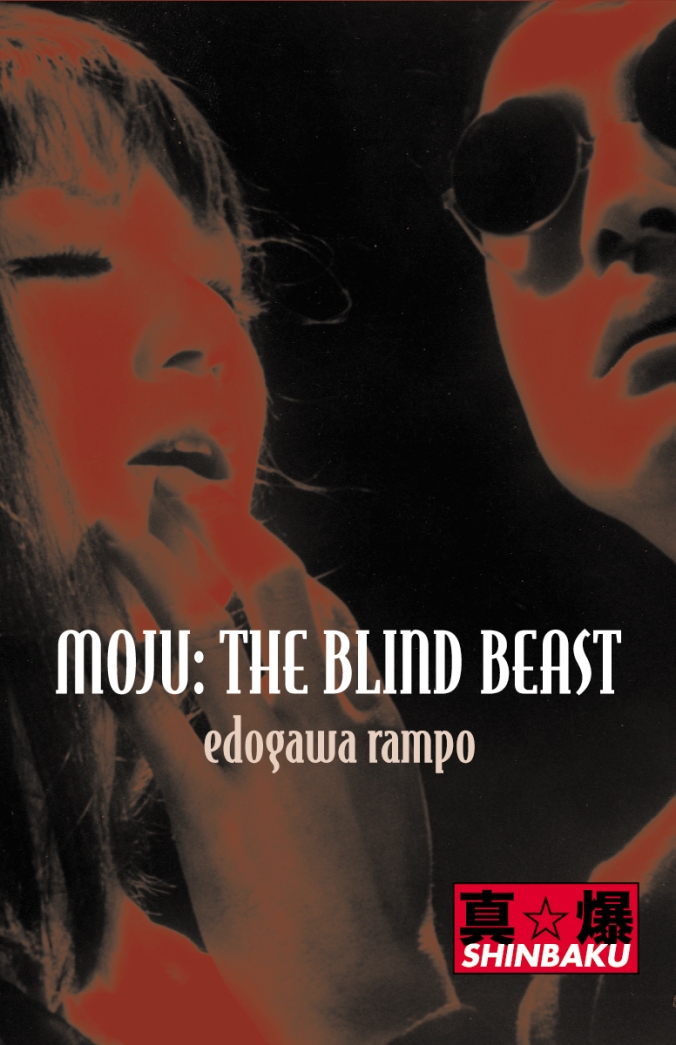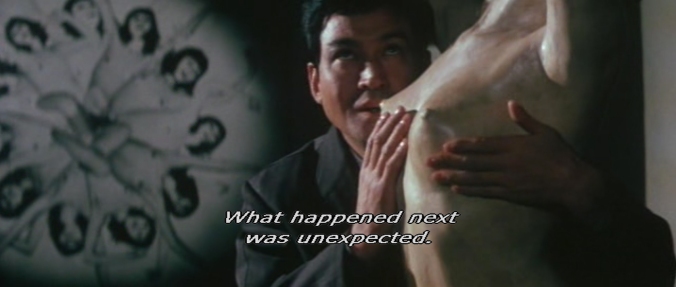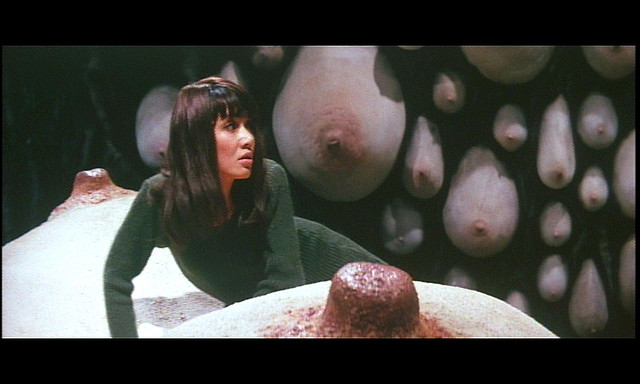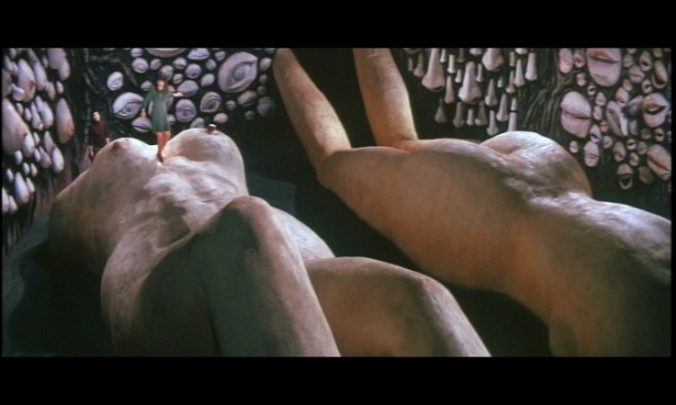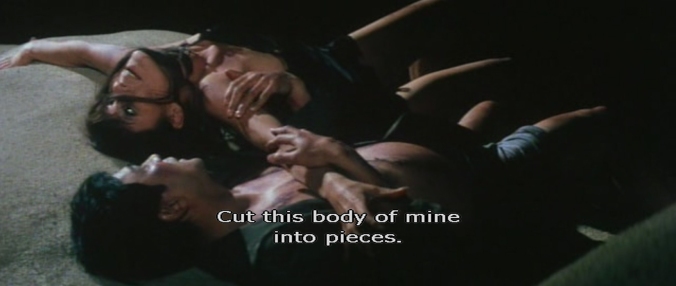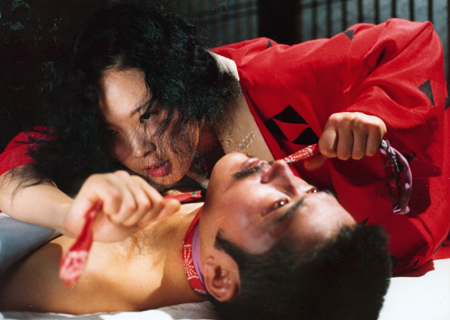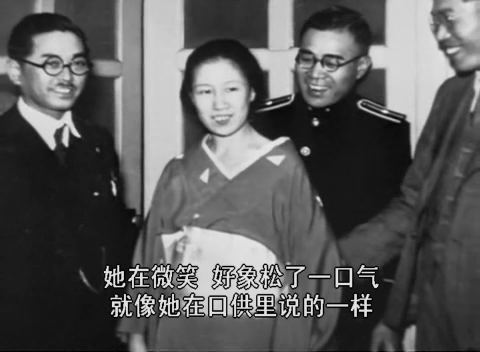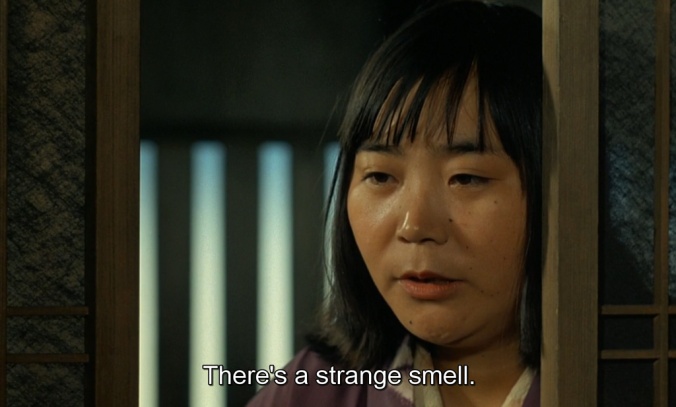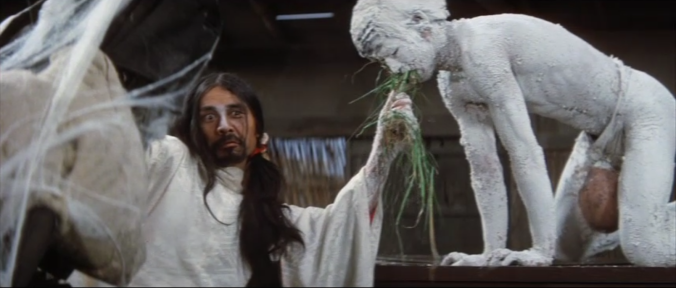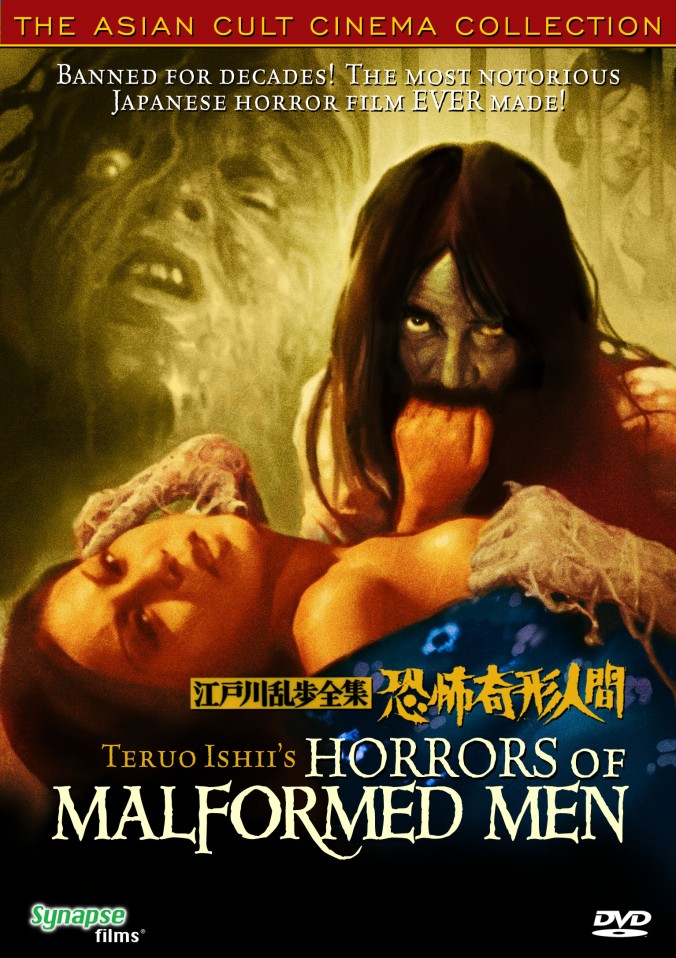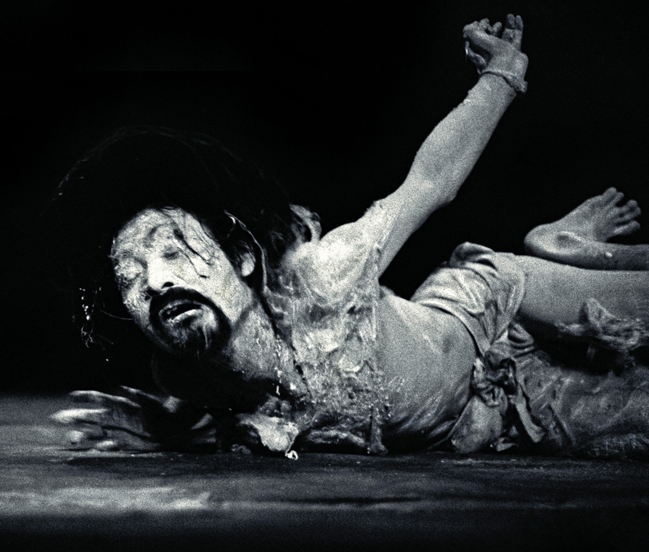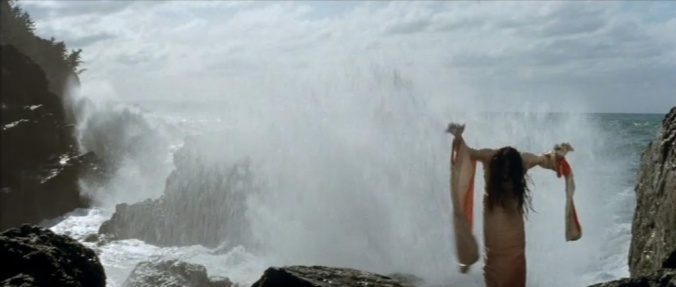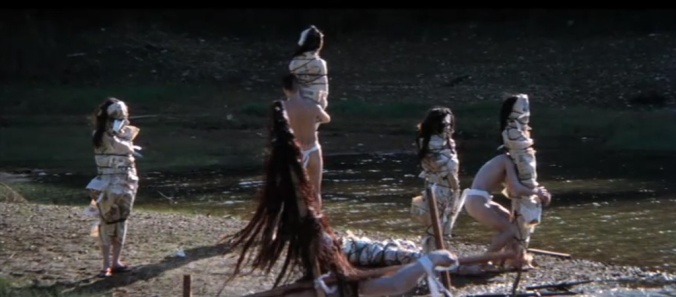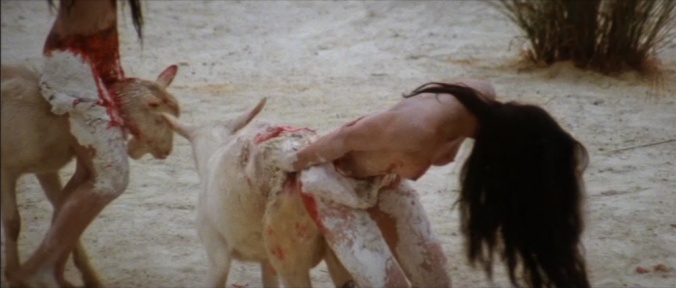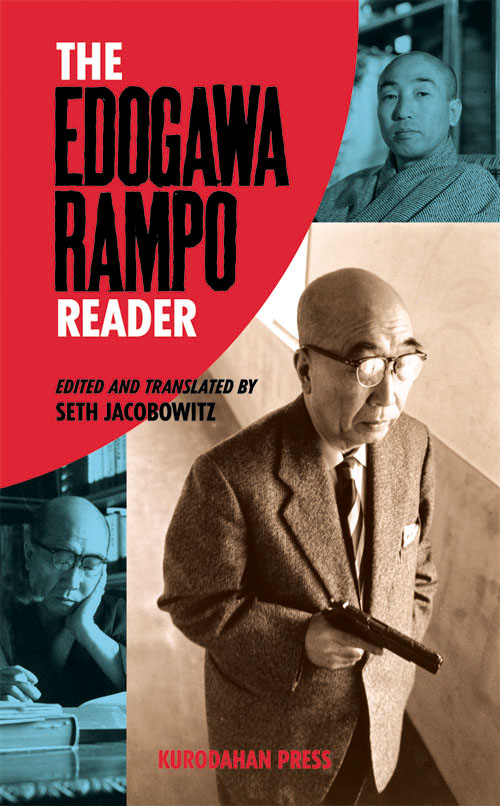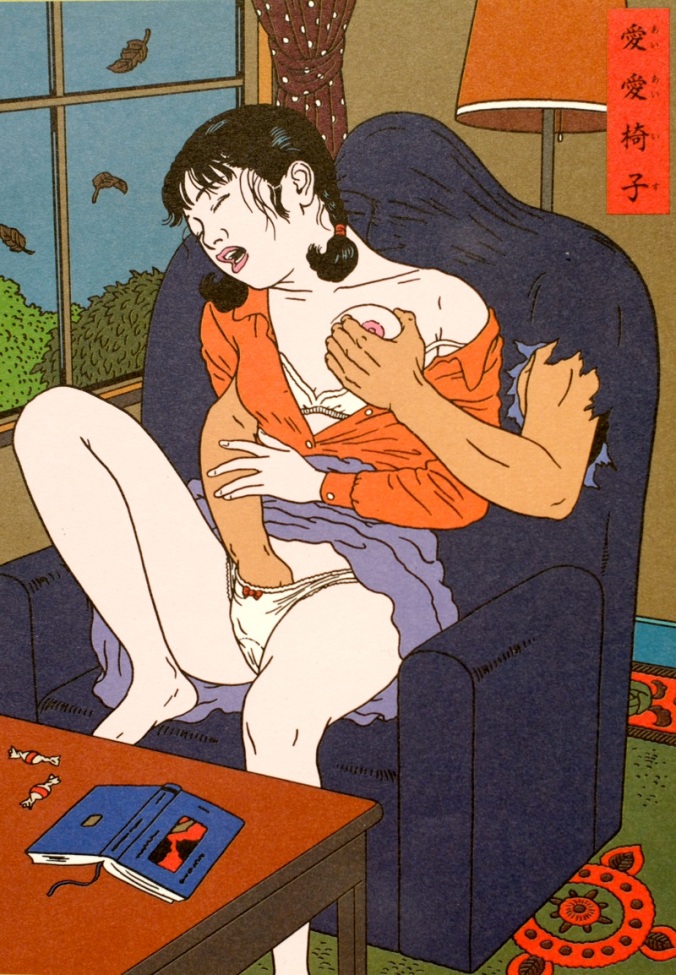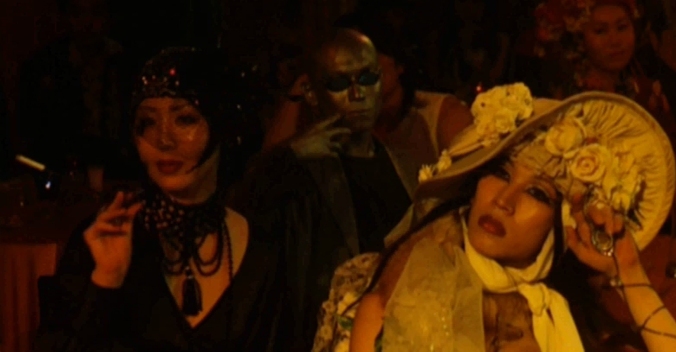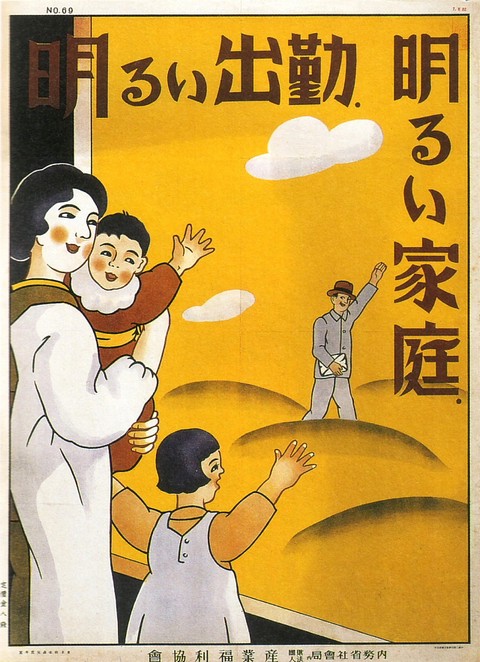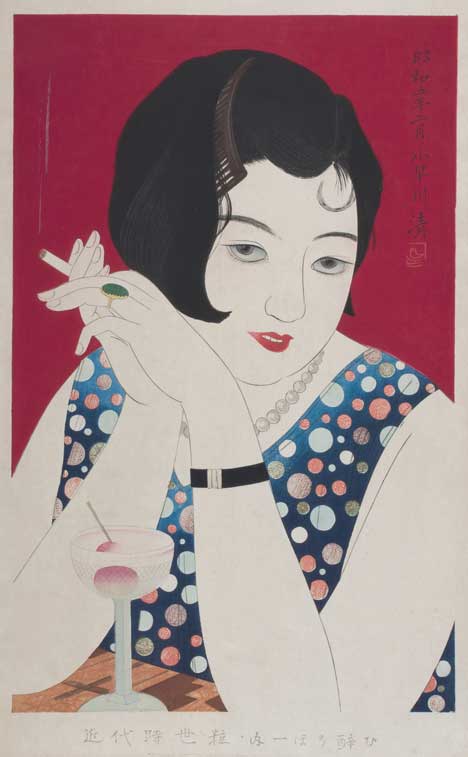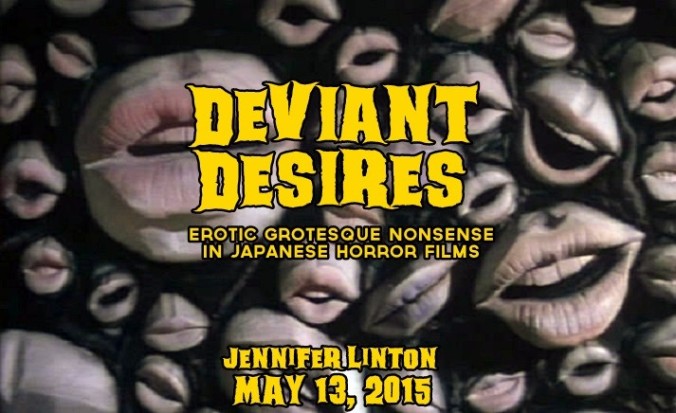This blog post is Part VII and the final instalment in my series on Ero Guro Nansensu. Click here to read the previous posts on this topic.
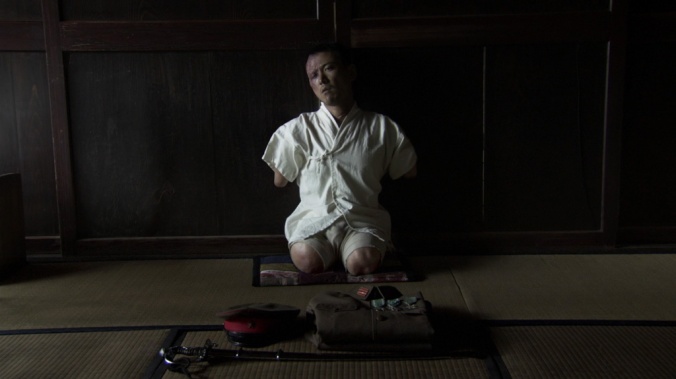
Caterpillar (2010), directed by Kōji Wakamatsu.
Wakamatsu is best known as the director of a number of pink films (pinku-eiga) in the 1960’s and has been called “the most important director to emerge in the pink film genre.” (He also, coincidentally enough, produced Oshima’s In the Realm of the Senses). His adaptation of Edogawa Rampo’s short story Caterpillar belongs to a more recent trend in Japanese film to question their military past.
‘The Caterpillar’ (first published in 1934), was the only of Rampo’s stories to have been banned by the Japanese authorities. It was censored at the start of the Second Sino-Japanese War (1937) out of fear it would derail the nationalistic movement at the time.
The film opens with actual footage of Japanese soldiers during the Second Sino-Japanese War. In the original story by Rampo, Lt. Sunaga has been brought home from an unnamed war. Director Wakamatsu unambiguously attaches Rampo’s narrative to Japan’s war with China. Given the story’s previous history of censorship for being ‘anti-nationalist”, it is fitting that Wakamatsu uses Caterpillar as the set piece for his critique of Showa era ultranationalism.
After the war footage is shown during the title credits, we witness Lt. Kurokawa (Wakamatsu changes the names of the main characters) rape and murder a Chinese woman. While the event is not specifically named, this scene calls to mind Japanese war atrocities such as the infamous Nanking Massacre.
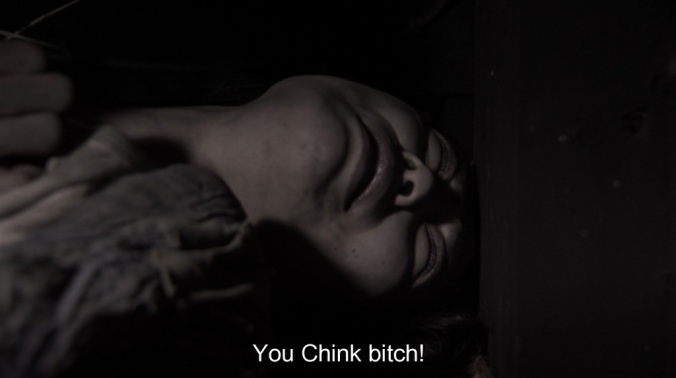
In late 1937, over a period of six weeks, Imperial Japanese Army forces brutally murdered hundreds of thousands of people–including both soldiers and civilians–in the Chinese city of Nanking. The horrific events are known as the Nanking Massacre or the Rape of Nanking, as between 20,000 and 80,000 women were sexually assaulted.
This added backstory of Lt. Kurokawa’s past transgressions (a detail not found in the Rampo text) frames Caterpillar partly as a tale of retribution. He has returned home a horribly disfigured quadruple amputee who is deaf and mute. He is, of course, completely dependent on his wife for all his physical needs, and he communicates these through a series of animalistic grunts and the use of his eyes. Given his condition, Kurokawa devolves into something less-than-human and, much like the caterpillar (whose form he now physically resembles), his entire existence focuses solely on food and sex.
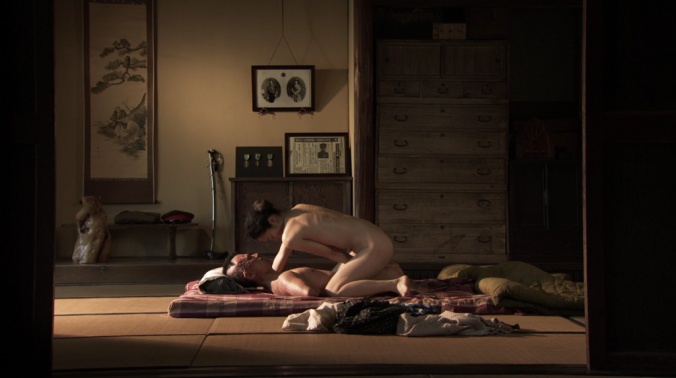
Lt. Kurokawa is brought home to his family’s village with much pomp and ceremony, being praised as “an inspiration to all servicemen”. His family, however, appear more shocked and horrified than inspired. For the rest of the film, none of the characters dare acknowledge the “elephant in the room”, which is the fact that the celebrated War God is little more than a stump with a head attached. This element of absurdity is the strength behind Rampo’s short story, and director Wakamatsu underscores this with dry, deadpan humour.
Lt. Kurokawa’s wife Tadashi is burdened with the round-the-clock care of her husband, which is she expected to perform without complaint. This is the same husband who used to physically abuse her for failing to provide him with a son. Her only joy in an otherwise difficult existence are the occasional outings she makes with Kurokawa, whom she dresses in his uniform, his medals proudly displayed.

Wakamatsu’s film looks great, and is somewhat successful in fleshing-out the short story by Rampo. That said, it does feel stretched a bit thin. A 30-minute short might have been better for the Rampo story, rather than a feature-length film. It does, however, remain the most faithful adaptation of Rampo’s The Caterpillar currently set to film.
One interesting element to note about Rampo’s Caterpillar is that it very probably was the progenitor of amputee fetish (known clinically as acrotomophilia) as a favourite motif amongst current ero-guro content. This connection of amputee fetish to Rampo’s short story is made much more overt in Hisayasu Sato’s version of Caterpillar, a short segment he directed for the 2005 horror anthology Rampo Noir. Unlike Wakamatsu’s relatively faithful retelling of the Rampo text, Sato’s film focuses tightly on the highly eroticized, BDSM-flavoured power dynamic that exists between the limbless lieutenant and his wife — an element that is only a subtext in the Rampo story. While this turning-of-the-tables in terms of power dynamics is a key feature in Wakamatsu’s version, Sato’s impressionistic and considerably kinkier version deals with this to the exclusion of the rest of the story. Reminiscent of the film Boxing Helena, the lieutenant’s wife applies her surgical skills to render him her helpless and fully dependant sex slave.
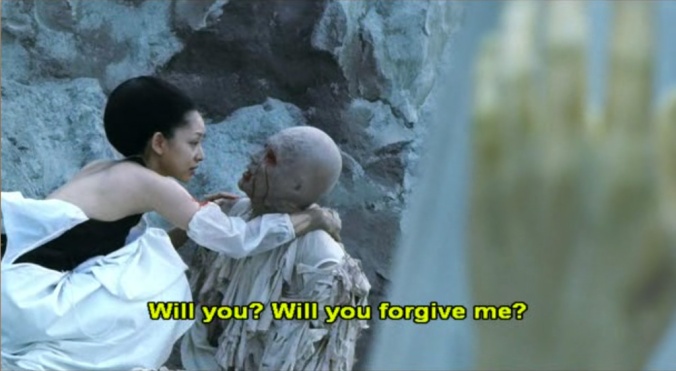
Hisayasu Sato’s version of Caterpillar, directed for the 2005 horror anthology Rampo Noir.
Conclusion
Ero guro nansensu served as both a diversion and as a social “pressure valve” — absorbing all of the collective fears brought on by economic recessions, the Great Kanto Earthquake, growing militarism and political conflict, and the rapid social and cultural changes taking place within the Japan of the 1920’s and 30’s. These collective fears (and forbidden desires) were then given expression within the safe haven of ero guro’s imaginative play. The Modern Girl supplied ero guro with the intrepid heroine for its dark, erotically-tinged narratives, and the cafes and jazz-clubs provided the setting for these new, Modernist tales of the macabre.
